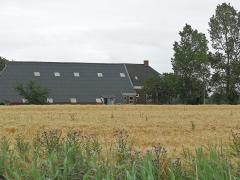Emissions of transboundary air pollutants in the Netherlands, 1990–2014: Netherlands Informative Inventory Report 2016
Ammonia emission levels in the Netherlands increased in 2014. These levels do not comply with the Dutch national emission ceiling for ammonia as set by the European Union, which entered into force in 2010. Two important factors that contributed to the increase in ammonia emissions in 2014 were the growth in dairy cattle and the altered cattle feed composition. Emissions of nitrogen oxides, sulphur dioxides and non-methane volatile organic compounds continued to decrease slightly. The Dutch emission levels for these substances are in compliance with the emission ceilings set by the EU.
This has become apparent from the Dutch emission data on transboundary air polluting substances, presented in the 2016 Informative Inventory Report (IIR) by the National Institute for Public Health and the Environment (RIVM). For this report, PBL Netherlands Environmental Assessment Agency contributed to the calculation and reporting on air polluting emissions in the Netherlands.
The report describes Dutch emission trends and levels for sulphur dioxide (SO2), nitrogen oxides (NOx), non-methane volatile organic compounds (NMVOC), ammonia (NH3), carbon monoxide (CO), particulate matter (PM), and heavy metals and persistent organic pollutants (POPs), over the 1990–2014 period. For all these substances, emission levels have decreased. The downward trend may be attributed in particular to cleaner fuels, cleaner car engines and to emission reductions in industrial sectors.
Authors
Specifications
- Publication title
- Emissions of transboundary air pollutants in the Netherlands, 1990–2014: Netherlands Informative Inventory Report 2016
- Publication date
- 22 April 2016
- Publication type
- Publication
- Product number
- 2410




